Thank you to Park Seed for partnering with me on this post. As always, all words, thoughts and seed choices are my own.
The hardest part of growing plants from seed is keeping the amount I grow in check. I can’t be alone in this. It can be so tempting to plant just a few more, or the whole pack of seeds. But that kind of volume can take the fun out of growing from seed when it becomes overwhelming.
And plenty of people, including maybe even future me, want to grow a few plants from seed without piles of gear.
And it’s not hard, as long as you have a plan, a system and a little restraint.
WHERE TO GROW
A nice, self-contained seed-starting kit is a joy to have when you’ll be making the most of a small amount of growing space. Park Seed’s Bio-Dome is a mini greenhouse growing system that is well suited to growing a variety of plants from seed.
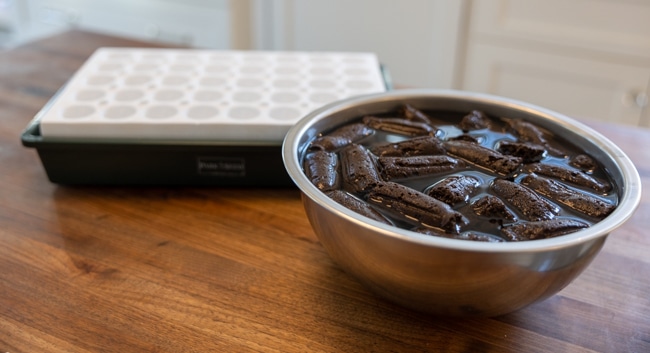
I’m using Park’s Original Bio Dome with 40 cells, which is suitable for all but the biggest and fastest growing seeds. It has a footprint of about 15 inches long by 9.25 inches wide, which makes it small enough to sit on a table in a window. Made of sturdy, hard plastic, the bottom tray and humidity dome should last for years.

A styrofoam insert holds bio sponges, a growing medium that springs to life after a quick soaking to fill each cell. Everything other than the bio sponges is reusable and refills are available.
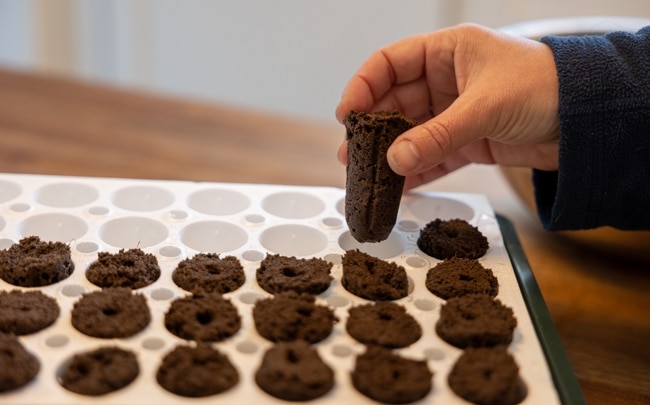
WHAT TO GROW
If you’re planning to mix and match a variety of seeds—and you should because how many of us need 40 of one plant–you have to look for some similar characteristics among plants.
Ideally they will all need to be started around the same amount of time before the last frost. Most seed packets offer a range of a couple weeks in which to start seeds, so aim to have all the varieties fall within that range.
Seeds need different temperatures for germination. Look for varieties that all germinate at about the same temperature.
It’s a bonus, but not strictly necessary, if you can also find seeds that germinate in about the same amount of time.
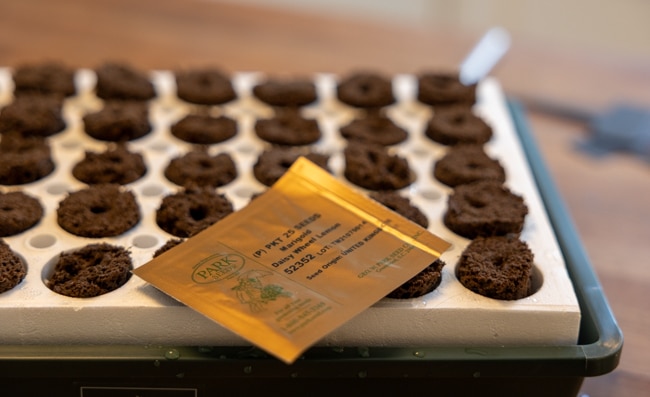
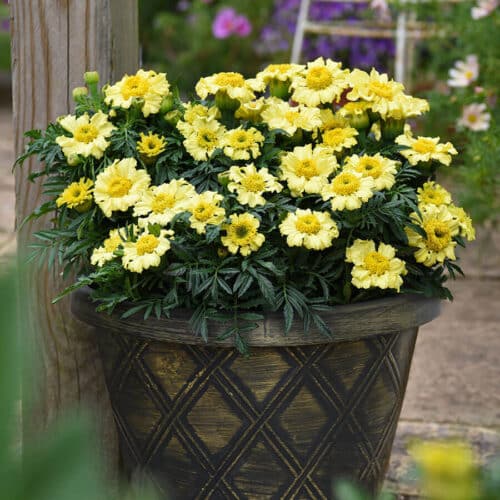
I grew a variety of seeds, including ‘Daisy Wheel Lemon’ marigold, ‘Big Blue’ Salvia, two types of Ageratum, Rudbeckia ‘Sahara’ and even a lone Tithonia seed I found in a packet. I could have grown several other varieties, but I wanted quite a few marigolds to tuck in around the vegetable garden as well as to help fill holes in the rest of the garden.
DEVELOP A SYSTEM
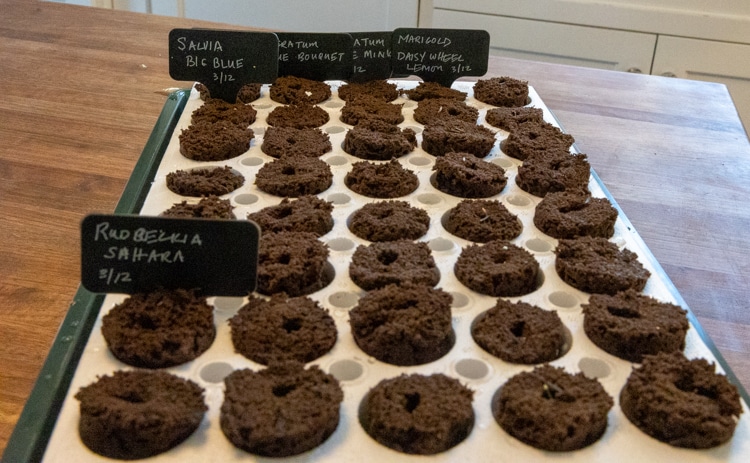
When you’re planting several varieties of seeds in the same tray good labeling is key. I start from the back of the tray (which could be the long or short side depending on your approach) and label from there, so the label sits at the back of a run of cells. When I start a new variety, a label goes in the cell that is farthest back.
PLANT AWAY
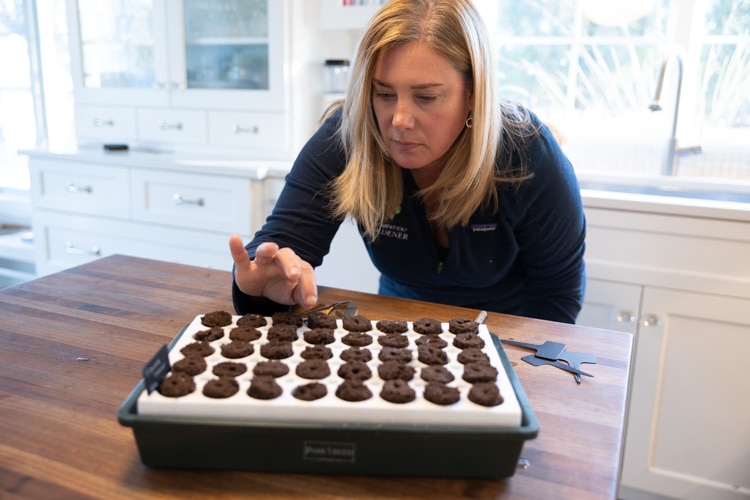
Bio sponges have a small hole for larger seed but small seeds that are meant to be sown on the surface can just be pressed into the top. There’s no need to add anything else.
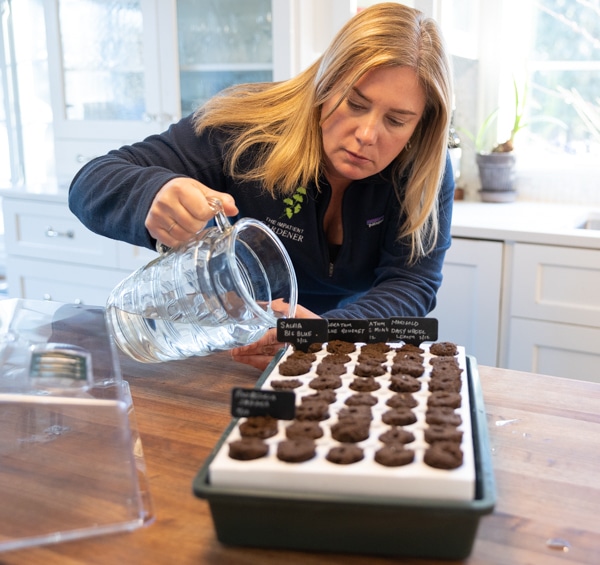
Watering seedlings from the bottom is always a good idea but it’s the only way to water with the Bio Dome. Just keep a quarter-inch or a bit more water in the bottom of the tray and allow the bio sponges to absorb it.
HEAT AND LIGHT
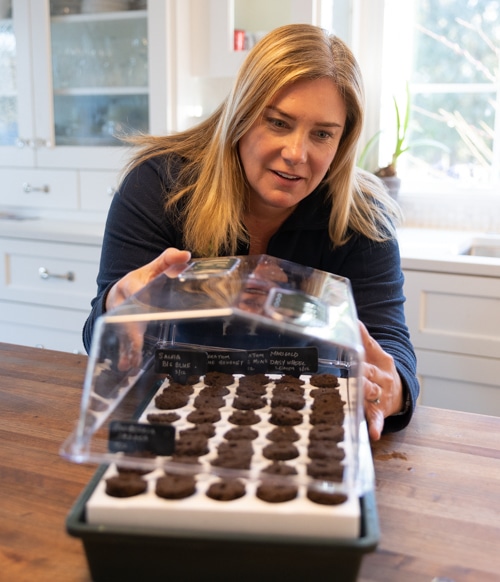
If you’re growing seeds that need bottom heat, set the Bio Dome on a heat mat or another warm surface. Keep the humidity dome vents closed until seeds start germinating and then you can open them as needed.
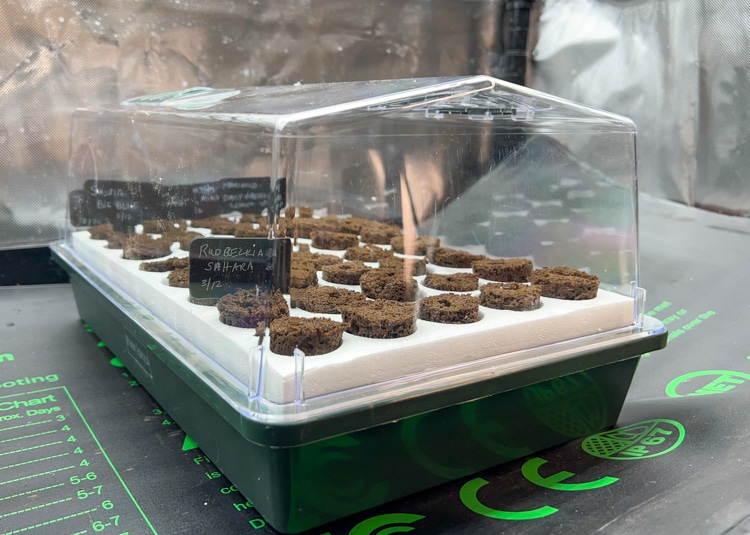
Once seeds germinate, they will need light. A very bright window might work if you have very clean windows and very strong light. A grow light is a much better option, and with a small system like this an inexpensive clip-on grown light can do the job of supplementing natural light if you don’t have a large grow-light system.
GROWING ON
Different varieties will grow at different rates so you’ll have to offer some individual attention as they grow. With some dilute fertilizer applications, seedlings should be happy in the Bio Dome for some time as the roots will reach down in the system, not circle around.
When they outgrow their cells, pop them out (there’s a finger-sized hole at the bottom of each cell) and pot them up in larger pots to grow on before you harden them off and plant them outside. Fortunately you can do this without disturbing other cells so you can pick and choose which need to move on, an important factor when you’re planting multiple varieties.
OTHER CONSIDERATIONS
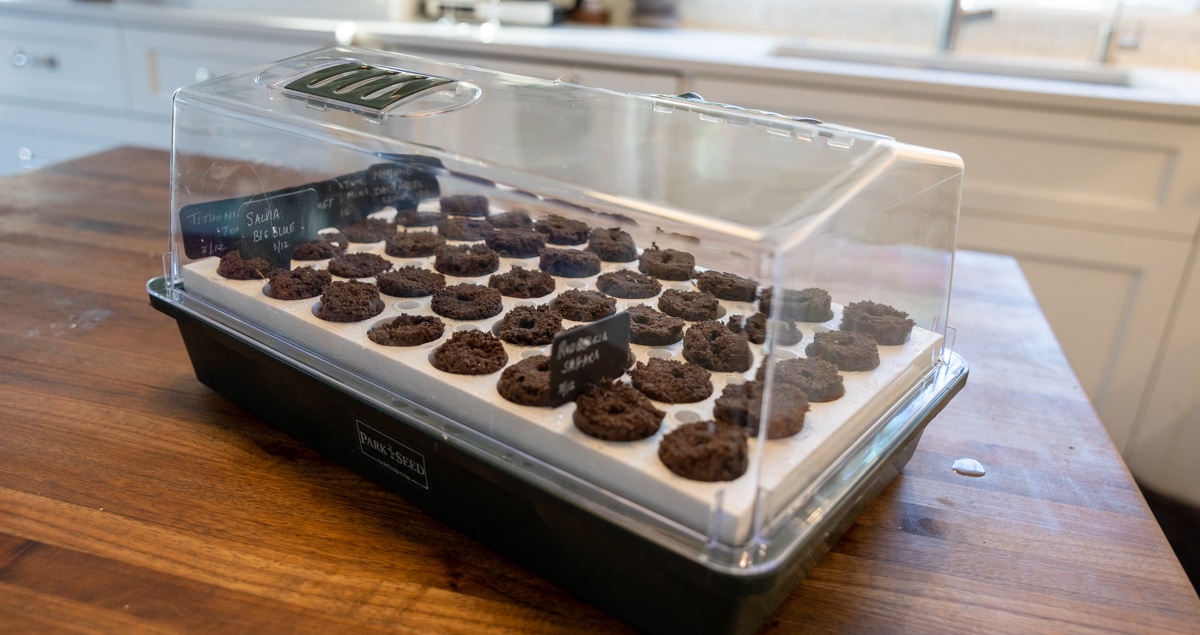 Odds are that you’ll want to grow several varieties of plants with different needs. If you can divide them into two groups by starting time, you can get away with just two systems for all your seedlings.
Odds are that you’ll want to grow several varieties of plants with different needs. If you can divide them into two groups by starting time, you can get away with just two systems for all your seedlings.
You may even be able to replant the first Bio Dome with another set of seeds, perhaps those that should be started four weeks before your last frost, assuming some of the plants you started in the first round have moved on to larger pots. The system comes with an extra dozen or so bio sponges but more are available separately.
Every year I wonder why I started so many plants from seed, far more than I could ever use in my own garden, and I think it’s because I feel the need to fill a tray. Starting only what I really need in a simple setup is very appealing. Maybe this old dog can learn a new trick.

10 Responses
Just starting to use the bio domes to seed start several ccool weather and warm weather seeds. The sprouts came up quickly but spindly.
How long do you keep the dome on once the seeds sprout?
This year I decided to go ahead and pot up way more of my vegetable seedlings than I could possibly need–and now I’m trading the extra with neighbors for whatever they started. We have a brisk garden trade in my neighborhood! I also sowed a whole lot of natives for my new meadow garden in the back. I potted up a whole flat (72) of my Anemone virginiana and then stopped, because who needs more than 72 of something? Then I read in my latest book “The Naturalistic Garden” that for a meadow one should take the number you think you need and multiply it by 10. OK THEN I guess maybe I need 720 of them? Hahaha. Yeah right.
I love your YouTube channel! I have learned so much from you and love your style. I used this seed system from Park Seed probably about eight years ago and it did work very well. The only thing I would say was I was still finding those spongy little plugs around the garden long after the plants had expired. I thought the park seed seeds were wonderful quality, especially the enormous marigolds and the colorful snapdragons that I grew.
I’ve been using the Bio Dome for about 3-4 years and LOVE it! I have the 60 cell and the 120 cell. I just potted up some of my plants today to get them growing on for a little while before planting them out in the garden. FYI the sponges NEVER disintegrate I dig them up a few years later from where I planted them.
I always over plant and then give my extras away or sell them for a few dollars. This year I have ten trays of seedlings going and will have another 8 to 10 trays to be started in the next few weeks. I have considered soil blocking but it just seems like too much work. Right now my seedlings are super easy to care for. I may have to bump up a few to larger cells but mostly the process is pain free. I do adore the seed starting process though.
(I am growing cup and saucer vines, black eyed Susan Vine, Japanese morning glories, coneflowers, rudbeckia, dahlias, dianthus, tomatoes, and more from seed this year. I started close to 500 seedlings last year and this year will be more than twice that. Wish me luck lol
I’m one of those that might think I need 40 of each and I’m sure I will have way too many when all is said and done, but I do have sources to give them away to welcoming homes. I just can’t help myself…..I pull my baby seedlings out of the Bio Plug Tray (mine has smaller plugs) when they start to sprout and repot into another tray/pot and proceed to start another kind of flower. I’m retired so I have lots of time to mess with them…..can’t be outside yet it’s just to cold, so what else is there to do. 🥰
I’m trying to get my head around “no one needs 40 of the same plant”. Such a true statement and this is my 3rd year starting seeds and have learned to temper my desire for ALL OF THE PLANTS. I do like the biodome. I didn’t order new sponges this year and now I wish I had. But I need to get more organized to group seeds by starting time and get more efficient. Yay spring and all the planting videos and blog posts!
thanks for this review, I may have to upgrade from 3’six packs on a cookie sheet. Do the sponges have peat or coir?
No they are only sponges not soil at all.
Enjoy your blogs and videos, I appreciate info, but also your personal notes. I only have two seed starting trays, so I have to be very careful what I plant. It is fun to grow some unique plantsto share with others also. As you said, you don’t need 40 of one plant, but don’t want to leave a cell empty 🙂